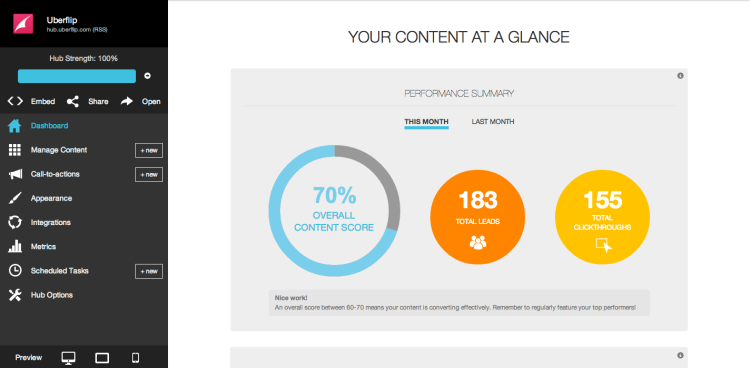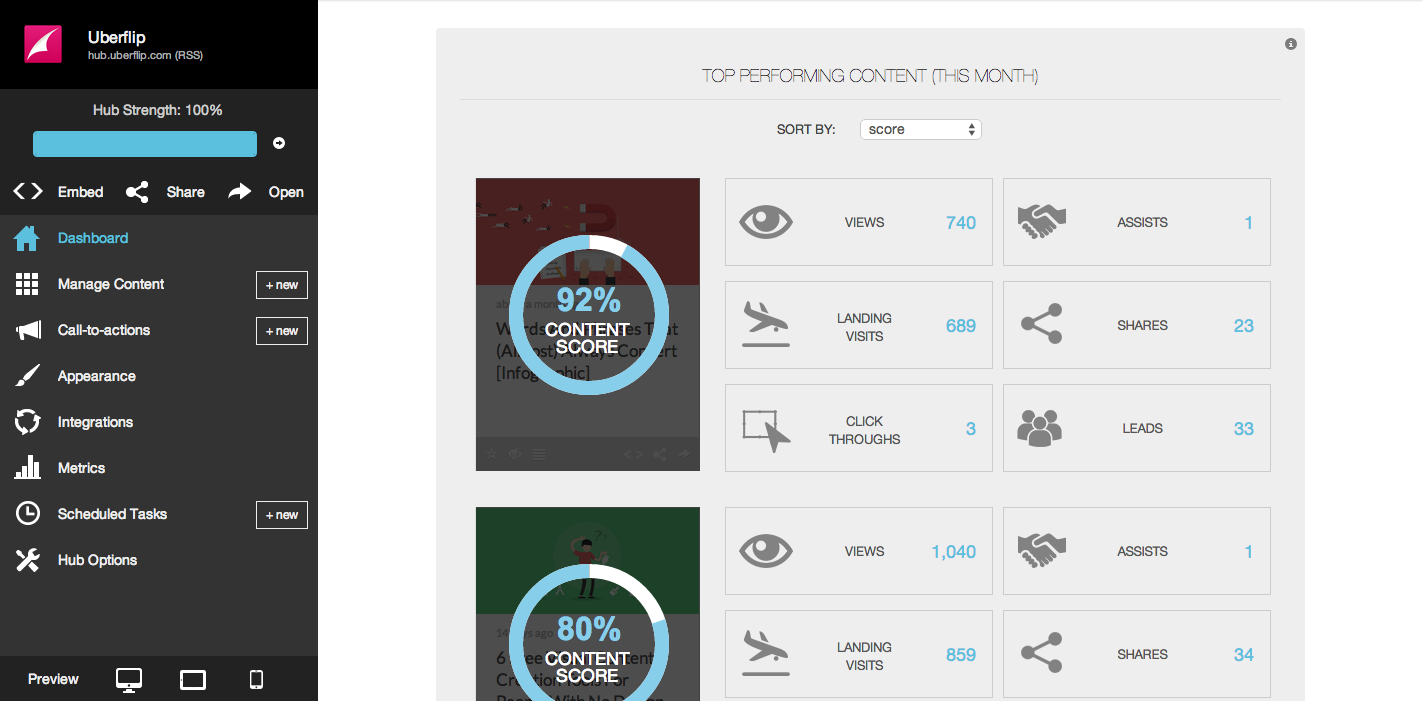How do you measure if the words, pictures, or videos you’re sending out are accomplishing your marketing goals?
There’s a mountainload of data to answer that question. Which is the problem, since few marketers are prepared to climb that mountain. To reduce the mountain to a molehill, content-marketing software automation company Uberflip is today introducing its Content Score.
The Content Score judges the effectiveness of all the content in a Hub on the platform, as well as any piece of distributed content, with a single score from 0 to 100 percent. Five attributes are measured: page views, shares, landing visits, call-to-action clickthroughs, and leads generated. Over 60 percent is very good.
The score is determined by the relative weight of the attributes. “If a video receives 1,000 views and generates 50 leads,” Uberflip chief executive Yoav Schwartz told VentureBeat, “that will lift your score significantly.” The platform also scores the likelihood that a user will convert to a sale on the next visit.
The data has previously been available on the platform, he pointed out, “but it’s only valuable to those who know how to sift through it” — and doing so has risked data overload.
Instead, the score converts the data relating to each piece of content in a user’s content Hub into a simplified benchmark.
Different kinds of content can generate different scores. A “snackable” piece of content, for instance, might score differently than a more complete piece. The current goal of Content Score is to generate leads, Schwartz said, but, “as we scale this out, we’ll allow customers to fine tune” the scoring model.
Other platforms provide data to measure content effectiveness. Schwartz notes that competitor Kapost, for instance, also offers a way to judge content effectiveness. “The big differentiator,” he told us, “is we control the experience, know exactly how a user is consuming their content, in real-time.”
As data analysis continues to drive marketing, it is becoming clear that the downside of big data is that it is, you know, big.
Judgments about whether a video, a white paper, a stream of tweets, or a Pinterest page of images is worth the money have sometimes become buried under the information about them. A single score is one way out.



